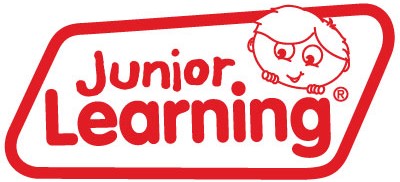Math Cubes

Unlocking the Power of Math Cubes
Mathematics can sometimes seem like a maze of numbers and abstract concepts, especially for young learners just starting their journey. But what if there was a way to make math more hands-on, engaging, and easier to understand? Enter Math Cubes – a versatile, tactile tool that can turn learning math into a fun and interactive experience. In this blog post, we’ll explore the wonderful world of math cubes and how they can help junior learners conquer foundational math concepts.
What Are Math Cubes?
Math cubes are small, colourful cubes that are used to represent numbers and their relationships. These cubes are designed to break down complex concepts into bite-sized, visually appealing chunks, making math more concrete.
Why Math Cubes Are Important
-
Visual Learning
One of the key strengths of math cubes is their ability to represent abstract concepts visually. Children are naturally drawn to colourful, tangible objects, and math cubes make it easier for them to "see" how numbers work. Whether they’re learning to add or subtract, or exploring multiplication and division, math cubes offer a hands-on way to understand the relationship between numbers. (Mathcubes - Ten Frames)
(Mathcubes - Ten Frames)
-
Concrete Understanding of Place Value
Place value is one of the foundational concepts in math, and math cubes help bring it to life. For example, 10 unit cubes can be grouped together to form a single tens cube. This hands-on approach helps children grasp the idea that numbers are made up of tens, ones, hundreds, and so on. When they see that 10 ones make a 10, and 10 tens make a 100, they start to form a solid understanding of how our number system works. (Mathcubes - Place Value)
(Mathcubes - Place Value)
-
Building Problem-Solving Skills
Math cubes encourage children to think critically and experiment with numbers. By physically manipulating the cubes, they can test different addition, subtraction or multiplication strategies. For example, they might group cubes to represent different values, then break them apart to explore different ways to solve a problem. This experimentation is key to developing strong problem-solving skills.
(Mathcubes - Multiplication)
-
Encouraging Hands-On Learning
Kids learn best when they’re actively involved in the learning process. With math cubes, children can directly interact with the material, making learning feel less like a chore and more like an exciting challenge. They can build, count, and rearrange cubes to understand mathematical principles in a tactile way.
(Mathcubes - Angles)
How to Use Math Cubes in the Classroom or at Home
Whether you're a teacher looking to introduce math cubes to your students, or a parent helping your child at home, there are a variety of ways to use math cubes to reinforce key math concepts.
-
Counting and Number Recognition
Start with simple counting exercises. Ask children to count a certain number of unit cubes and then represent that number with the cubes. You can even introduce basic number recognition by asking, “How many cubes do you have?” and then reinforcing the number with a visual representation. -
Addition and Subtraction
Use math cubes to demonstrate addition and subtraction. For example, if you're adding 3 + 4, start with 3 unit cubes and then add 4 more. For subtraction, begin with a larger number of cubes and remove some to show how the total changes. This makes the concepts of "more" and "less" much more tangible.
-
Place Value Practice
Place value is an essential skill that students need to master early on. Use math cubes to show how numbers like 23 can be broken down into 2 tens and 3 ones. This makes it easier for children to visualise how numbers are made up of different place values and reinforces their understanding of how to "carry" or "borrow" when working with multi-digit numbers.
-
Multiplication and Division
Once your child is comfortable with basic addition and subtraction, math cubes can be used to demonstrate multiplication and division. For example, to multiply 4 by 3, arrange 4 rows of 3 cubes each, and then count the total number of cubes. This visual approach helps children understand that multiplication is essentially repeated addition. Likewise, division can be taught by grouping cubes into equal parts.
-
Patterns and Fractions
Math cubes can also help young learners explore patterns. Ask your child to arrange cubes in various patterns (e.g., alternating colours or grouping cubes in sets) and then discuss the patterns they observe. Fractions can also be introduced by dividing a cube into smaller parts to represent fractions like 1/2, 1/4, and 1/3.

(Mathcubes - Angles)
Fun Activities with Math Cubes
Here are a few fun activities you can do with math cubes to reinforce learning:
Math Cube Bingo: Create a bingo board with different math problems (e.g., 4 + 2, 3 × 5) and have children use their cubes to solve the problems. The first to complete a row of correct answers wins!
Math Cube Tower: Challenge your child to build the tallest tower using math cubes while practicing counting or performing simple math operations.
Cube Race: Set up a "race" to see who can add or subtract cubes the fastest. It’s a fun way to practice mental math while moving!
Conclusion
Math cubes are a powerful learning tool that makes math accessible and engaging for young learners. By using these tactile cubes, children can develop a deeper, more intuitive understanding of numbers and operations. Whether you’re teaching counting, place value, or multiplication, math cubes are an excellent way to help kids visualise and internalise math concepts, setting them up for success as they move on to more advanced topics.
So, if you're looking for a fun, interactive way to make math come alive, grab a set of math cubes and start exploring the world of numbers today!
